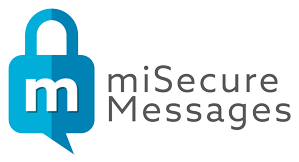
Reducing Misdiagnoses Using miSecureMessages
Misdiagnoses are dangerous to a patient's health outcomes and contribute to medical errors. When healthcare providers think of misdiagnoses, the reasoning behind misdiagnoses happening is due to inexperience. Such as, clinician-trainees interacting with patients of darker skin color may need more preparation and experience to recognize diagnostic signs. Inexperience can undoubtedly be one reason; however, not the only reason due to the pandemic disrupting primary care and patients transitioning to using telehealth more. The fragmentation of care and lack of follow-ups can lead healthcare providers to misdiagnose because healthcare providers can't assess the overall health history if only the bits and pieces are present. With patients feeling not cared for enough, sometimes the lack of timing can contribute to misdiagnoses—leading to patients feeling unsatisfied with the services and a higher likelihood of getting misdiagnosed.
As mentioned previously, misdiagnoses can happen due to a doctor's inexperience or, on the opposite spectrum, overconfidence. Therefore, it will result in insufficient testing for the diagnoses. Healthcare providers can connect and encourage questions when an organization equips an encrypted medical text app. Encrypted messaging allows healthcare providers to discuss patients' diagnoses or referrals without risking data breaches, saving organizations from medical errors, and wasting resources, cost, time, and labor. Diagnostic accuracy is critical in ensuring patients are satisfied with their services.
Impact On Darker Skin Color Patients
Another factor is that skin color's influence on medical care also contributes to misdiagnoses. When medical education has a deficiency in representing symptoms of darker skin color, the reality of exposure to darker skin color patients deserves more attention and awareness. Darker skin colors are more likely to misdiagnose than white skin because symptoms surface differently on a different complexion. Darker skin color is underrepresented in medical education and paired with myths. Due to a lack of darker skin color symptom exposure in medical textbooks, inexperienced physicians are even more likely to misdiagnose or dismiss symptoms. The study by James A. Diao, BS, and Adewole S. Adamson, MD, MPP, "Representation and misdiagnosis of dark skin in a large-scale visual diagnostic challenge." Diao and Adamson brought impactful insights on how many patients with darker skin color are disproportionately misdiagnosed compared to white patients.
How Can Organizations Solve Misdiagnoses
Misdiagnoses are dangerous and costly, "nearly half of the dermatologists report inadequate training on skin conditions in Black patients." (Diao and Adamson, p. 950). Due to the competitive nature of the healthcare industry and time constraints, healthcare providers must be aware of how symptoms surface and how to diagnose patients with darker skin color accurately. With heavy workloads layered on top of healthcare providers' responsibilities, underperformance and misdiagnoses are more likely to happen. When healthcare providers misdiagnose patients, resources, and costs are significantly wasted, leading to higher stress levels and burnout. Organizations that fail to address misdiagnoses can lead to malpractice lawsuits. Patients become unsatisfied, and their health is in jeopardy, leaving them hopeless, hesitant to seek medical care, confused, and frustrated. Understanding how healthcare providers are affected physically, mentally, and emotionally can allow leaders to reassess medical performance, delivery, and approaches. Leaders must establish trust and open communication for the relationships to grow and improve an organization on a structural level. Organizations that invest in miSecureMessages with the OnCall feature can combat underperformance and delegate tasks evenly to lessen burnout. Also, tailor the medical text app to the work culture and communication methods. Streamlining clinical communication can transform an organization to increase performance and reduce medical errors, saving costs.

